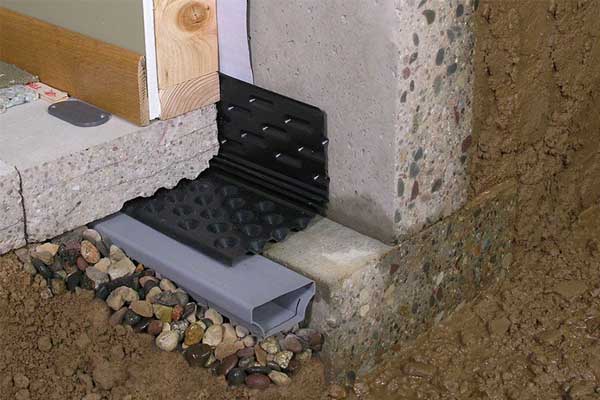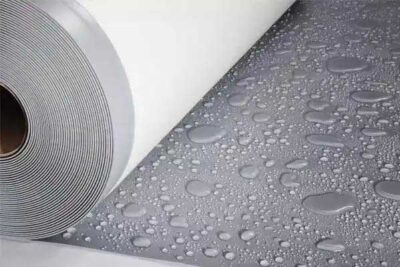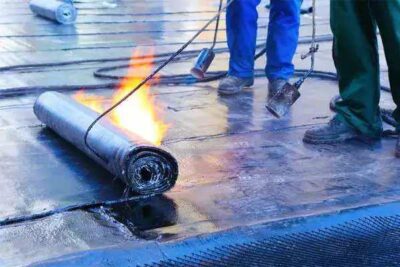
Contents
Foundation insulation, foundation shear walls are constantly exposed to leachate and pressurized groundwater from the time of the earth filling. Drainage applications around the foundation are only used to reduce the pressure of groundwater. Water entering the reinforced concrete on uninsulated surfaces causes corrosion in steel reinforcement and iron reinforcement and shortens the life of the structure.
The humidity that will occur indoors also negatively affects the comfort of life. In the process of foundation insulation, a waterproofing application to be made with coating or bitumen-based products or a membrane helps to prevent all these negativities.
There are two basic types of insulation materials: sheet membranes and sprays, including polymers and elastomeric. The contractor will typically use only one of these waterproofing systems. When deciding between them, contractors need to consider the initial cost of the equipment needed to do the job and how long it will take them to learn excellent waterproofing techniques.
The upfront costs for the installation of sheet membranes are negligible. The only special equipment required is a linoleum roll. This roller is used to install the membrane by pressing it firmly against the concrete wall. An angle grinder is also needed to smooth and clean the wall during the prep process to remove any protrusions from the concrete, but this is a tool most concrete contractors already have. Other equipment includes roller covers, brushes, knives and scrapers that most contractors have on hand as part of their normal concrete job.
Some Waterproofing Options in Basic Structures
Cement; It is a relatively inexpensive and readily available material for foundation insulation. It can be easily mixed and applied with a brush. An acrylic solution can be added to the cement to ensure better adhesion to the surface and create a more stable coating.
Rubber Membrane; It is an effective and environmentally friendly way to protect your basement from flooding. It does not contain toxic substances and does not harm the surrounding property. It can be applied to both interior and exterior surfaces by rubbing or spraying to stop both water and insects and moisture.
Tar; Thick and sticky liquid tar can be applied to the surface to act as a barrier for water to enter the basement. It is applied in layers to prevent water from passing through.
Bentonite; It is a clay-like material that can absorb water. It can form a permanent seal and combine with butyl rubber to form a layer that can stop water from passing through walls and cracks. It is non-toxic, therefore easy to use and apply. It also prevents damage to nearby property.
Excavation; Here, a drain is placed underground to prevent water from escaping into the basement. This is the most efficient method if done correctly.
Why Foundation Insulation Matters
Water is the source of many fundamental problems. Wet soil under a foundation can swell or lose strength. But this is the first reason to keep the foundation dry. It also has the little problem of wet, damp basements and walking areas that can produce mold and make underground interiors often unpleasant. The problem is that the typical concrete and slag foundation is not waterproof. While there are no cracks (and which concrete or slag foundation will not crack) will typically keep liquid water out, water vapor can still easily penetrate. Keeping water away from concrete foundations and preventing it from passing through the concrete and slag foundation is very important for a successful and strong structure.
There are three basic types of insulation systems: blind side and positive side (new construction) and negative side (new or existing construction).
Blind Side Waterproofing
- The waterproofing is installed before placing the concrete, but it is in constant contact with the concrete. Typically, sheet membrane systems such as HDPE and TPO sheets, sometimes bentonite sheets, sometimes PVC are used. Sometimes a hybrid system (liquid + layers) is used. The membrane is typically placed over rigid insulation boards. Sometimes a work plate can be provided. Usually, but not always, flooring is first during installation and then foundation walls. Excavation and support of adjacent building walls provide the substrate and problems.
- The key takeaway: It’s important to plan concrete placement as soon as possible after waterproofing is installed and carefully check all details before pouring.
Positive Side Waterproofing
- After the concrete is placed, the waterproofing to the foundation concrete is in constant contact with the concrete. Sheet membranes (eg, self-adhesive modified bitumen sheet membranes) or liquid membrane systems (smear or spray liquids) are typically used. Usually the blind side under the slab/floor is attached to the waterproofing.
- Surface preparation is critical and protection is required as soon as possible after installation. For sheet membranes, primers are often required and wrinkles should be minimized during installation.
Negative Side Waterproofing
- Indoor installed waterproofing / water control methods typical for existing building retrofitting / retrofitting, as the other two options are not possible.
Once water gets into your foundation, the damage can be very difficult and expensive to repair. The good news is that by taking care of foundation insulation, most damage can be avoided. The solution is to understand how and where water enters your foundation and to implement a design with appropriate details and construction oversight to avoid typical failures.
How We Can Help
Amaç, suyu tahliye etmek ve derecenin altında kuru bir iç alan sağlamaktır. Suyu dışarıda tutmak için tasarlanmış herhangi bir sistemin üç bileşeni vardır.
- Sewage to remove water from the bottom of the foundation
- Protective sheet application to prevent moisture from passing through the wall and directing the water to the sewer
- Floor surface treatment adjacent to the building to remove surface water
Foundation insulation can be done both from the inside and from the outside. You can choose the internal or external foundation insulation method according to the need. Keeping a basement dry is easy with waterproofing, drainage, and sealants. Whether you’re suffering from a wet basement or looking for ways to prevent basement flooding, it’s a good idea to invest in foundation insulation.







